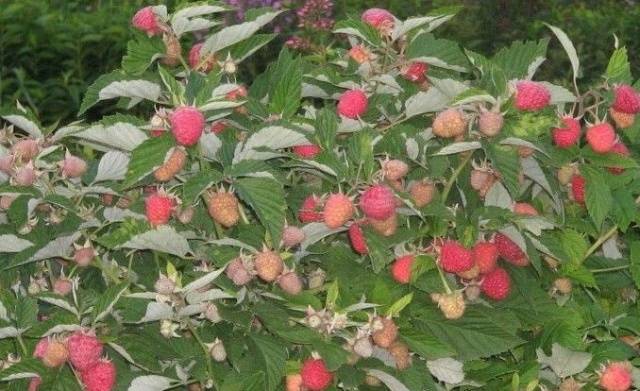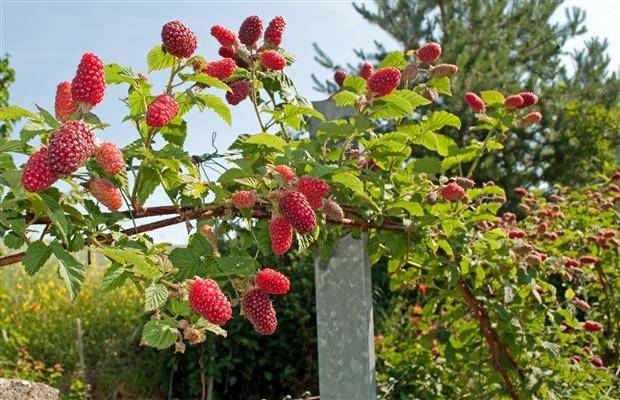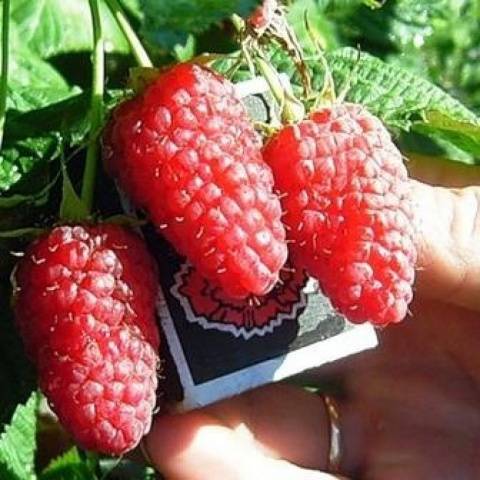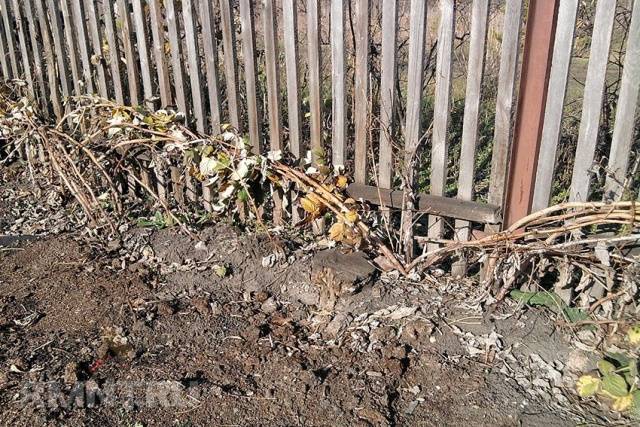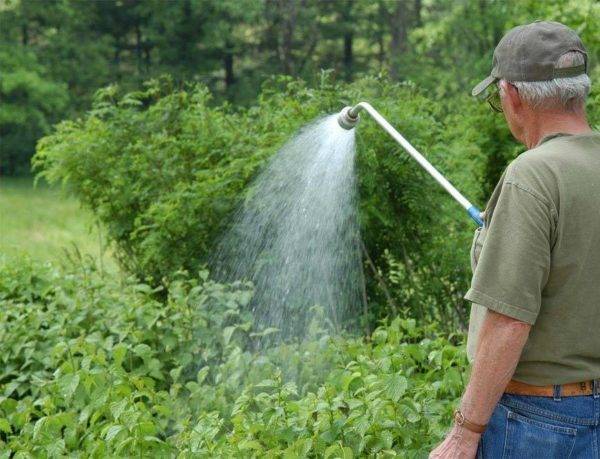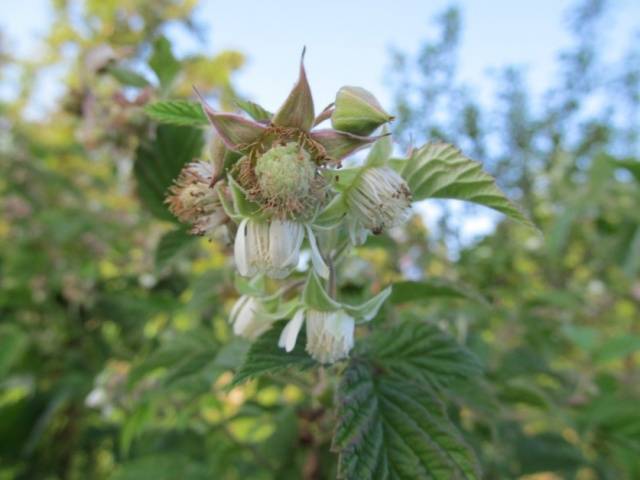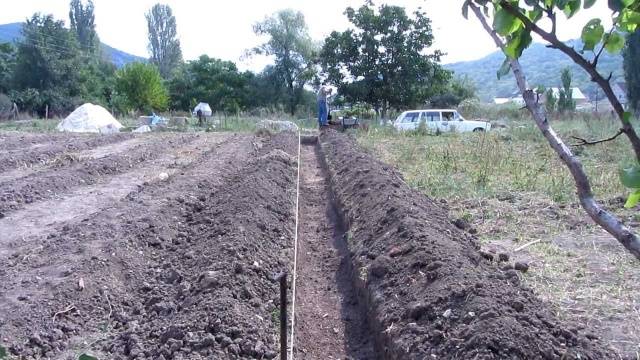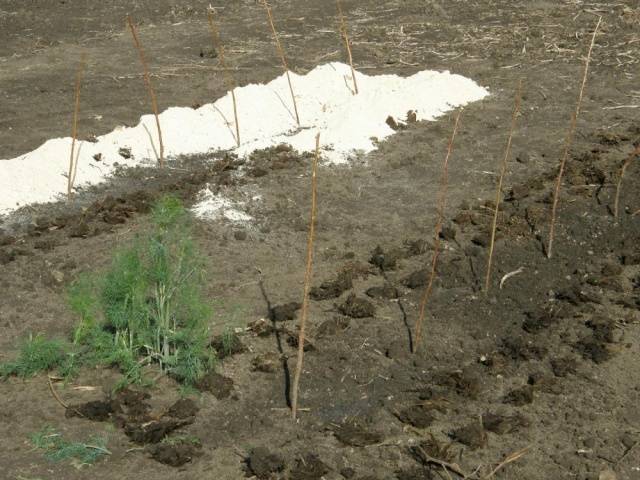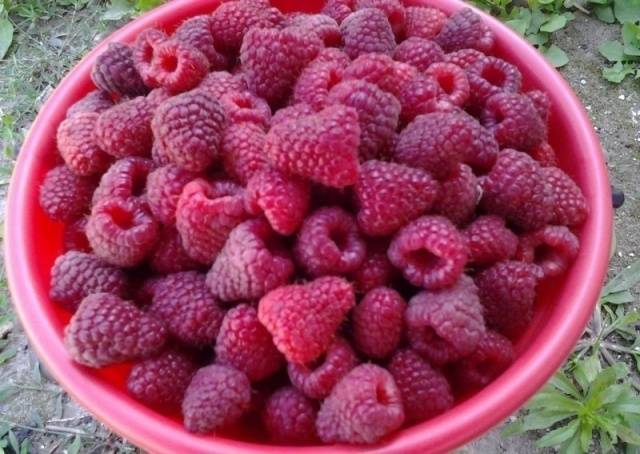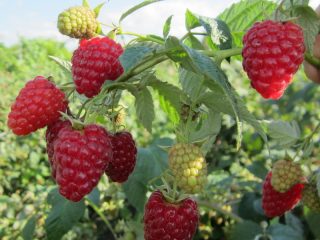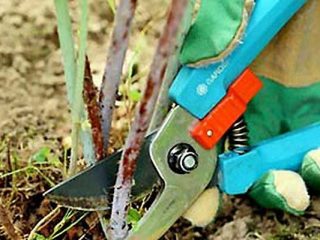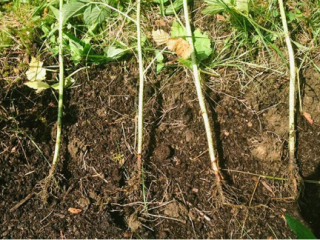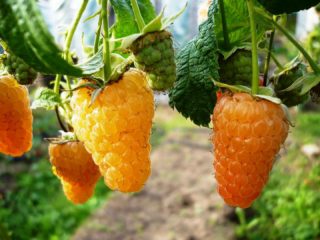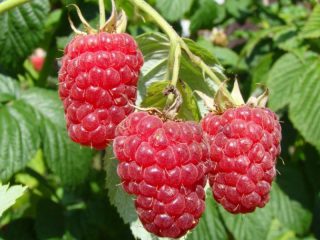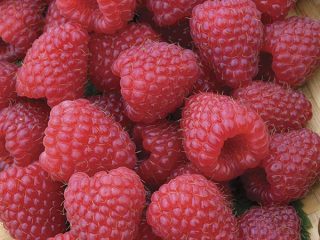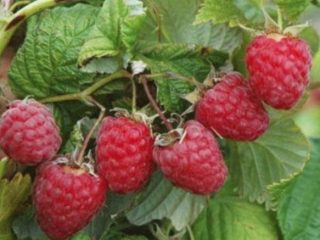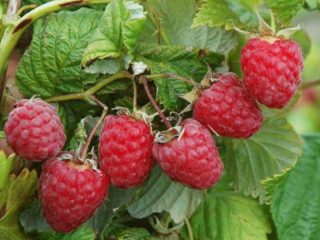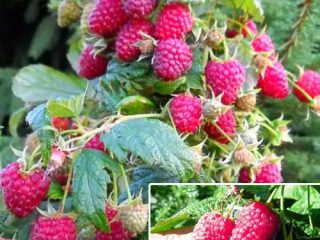Content
Everyone knows raspberries and, probably, there is no person who would not like to enjoy their tasty and healthy berries. There are raspberry bushes in almost any area, but not everyone can boast of a good harvest. Even good care will not save the situation if the variety is unproductive. In order for the gardener’s work to pay off with a rich harvest, it is necessary to plant proven large-fruited varieties. One of them is Tarusa raspberry.
Biological features
Raspberry is a perennial plant that belongs to the rose family. It is a deciduous subshrub with a two-year development cycle. The stems are erect, in the first year they are grassy green in color, the next year they become woody, and after the end of fruiting they die off completely. The fruit is complex, consists of fused drupes, and can have different colors: different shades of red, yellow, orange and even black.
Varietal diversity
The first cultivated raspberry plants appeared in the 16th century and since then the varietal diversity has been constantly growing. According to the characteristics of fruiting, raspberry varieties are divided into remontant and non-remontant. Not so long ago, varieties with a special shoot structure, the so-called standard or tree-like ones, were bred. Their shoots are very strong, thick and more like a small tree. Sometimes they are called that: raspberry tree. Raspberry Tarusa is a worthy representative of raspberry trees.
Varietal characteristics of Tarusa raspberries
The Tarusa raspberry variety was obtained, tested and introduced into cultivation by a domestic breeder, Professor, Doctor of Biological Sciences Viktor Valerianovich Kichina in 1993. From your parents, large-fruited Scottish hybrids, Tarusa raspberries have an impressive berry size and significant yield. Domestic varieties that participated in the selection process gave Tarusa raspberries winter hardiness and resistance to diseases and pests.
What is this crimson Tarusa tree like?
The description of the Tarusa raspberry variety should begin with the size of the berries: they are much larger than the average size and can weigh up to 15 grams. The length of the berry is also impressive - up to five centimeters!
The color is bright, rich red. Tarusa has a pronounced raspberry aroma. A characteristic feature of Tarusa raspberries is the frequent pairing of berries, which increases not only its weight, but also the yield as a whole. And it is already very significant - it reaches four kilograms or more from one bush per season. This is the highest figure among all standard raspberry varieties. The berries stick well to the bush and do not fall off for a long time. Their taste is pleasant, with a slight sourness.
The Tarusa raspberry bush is very decorative, of a compressed type with powerful shoots reaching a height of one and a half meters. The lower - standard part does not have lateral shoots; they grow in the middle and upper part of the bush, forming a kind of crown, like a tree. The number of side shoots of Tarusa raspberries, which provide an excellent harvest, can reach ten with a length of up to 50 cm. A distinctive feature of this raspberry variety is the absence of thorns, which not only makes caring for the plant easier, but also makes harvesting a pleasure. The ability to produce replacement shoots in the Tarusa raspberry variety is low; there are enough shoots for propagation, but it will no longer spread across the area.
Frost resistance of the Tarusa raspberry tree is up to -30 degrees; in regions with a more severe climate, the relatively small height of the bush allows it to be hidden under the snow, carefully bending the shoots to the ground.
In terms of ripening time, the Tarusa raspberry variety is medium-late; the time of fruiting depends on the zone in which it grows and ranges from early July to late August. A description of the Tarusa standard raspberry variety would be incomplete without mentioning that the dense berry is well stored and transported after harvesting, as it does not produce juice for a long time.
Agricultural technology of the Tarusa raspberry tree
Raspberries are an undemanding plant, but standard varieties, which include Tarusa raspberries, have their own characteristics in care.
What Tarusa standard raspberries like and don’t like
The main condition that ensures good growth, health of Tarusa raspberries and its rich harvest is compliance with the variety’s requirements for soil, water and light conditions, and fertilizing.
What kind of soil is needed
Tarusa raspberries love to eat. Therefore, the land must be fertile. Loose, loamy and sandy loam soils rich in organic matter are well suited. On sandy soil, Tarusa raspberries will be suppressed due to the lack of necessary moisture, the yield will decrease, and the berries will be small. Even frequent watering will not improve the situation. The only way out is to improve the soil by adding a sufficient amount of organic matter and a small amount of clay. Sand must be added to clay soil. An important indicator is the level of acidity. Raspberries do not tolerate soils with a pH less than 5.8 very well. Optimal pH values are from 5.8 to 6.2. If the soil does not meet these requirements and is too acidic, it must be limed in accordance with the liming composition standards on the package.
Moisture requirements
Neither too dry nor too wet areas will suit Tarusa raspberries. In places where groundwater is high, this shrub will not grow, since the roots easily rot from the increased amount of moisture. The soil should be moist, but without stagnant water. In dry weather, watering is required once every ten days, especially during the filling of berries.
Mulching the soil around the plants will help reduce the amount of watering. Any organic matter is suitable for mulch, except fresh sawdust. The layer of mulching material should not be less than ten centimeters, but preferably more.
Lighting requirements
Raspberry Tarusa loves the sun; in extreme cases, partial shade will do. In the shade, raspberry shoots stretch out, the yield drops sharply, and the berries become sour. There is a rule - the more sun, the sweeter the berries. When choosing a site for planting, you need to remember that Tarusa raspberries do not tolerate drafts and gusts of wind.
Feeding: when and with what
The more productive a crop is, the more nutrients it needs to grow. Tarusa standard raspberry is a variety with high potential yield. Therefore, special attention must be paid to fertilizing. The need for Tarusa raspberries in different nutrients is not the same.
- Potassium needs are met by adding 300-400 grams per square meter of ash from burning wood. It is enough to scatter it under the bushes once a season in the spring and lightly work it into the soil. This shrub does not like deep loosening; superficial roots are damaged. In addition to potassium, ash contains phosphorus and many microelements and prevents soil acidification.
- Tarusa standard raspberries need a lot of nitrogen fertilizers. A one-time feeding is not enough here. The best composition is to add 10 grams of urea and a kilogram of manure to 10 liters of water. The mixture is mixed well and the plants are watered at the rate of 1 liter per bush.
First feeding coincides with the moment of bud break. Second and third feedings carried out at intervals of fourteen days. Each feeding should be accompanied by subsequent watering with clean water.Do not water only if it rains heavily.
There should be more than half of the herbs in a non-metallic container, the rest is water. After a week of infusion, fertilizing is done in a dilution of one to ten, one liter per bush. During the season, it is enough to carry out 2-3 feedings.
At the stage of raspberry budding, foliar feeding is carried out with a complex fertilizer with microelements Ryazanochka or Kemira-Lux at the rate of 1.5 teaspoons per bucket of water. Feeding is carried out on the waxing moon in a fertile sign in cloudy but not rainy weather. The fertilizer solution is sprayed from a sprayer, wetting the leaves well. It should be absorbed into them before the evening dew.
Nitrogen promotes the growth of leaf mass and prolongs the growing season. The plant will not have time to prepare for dormancy and will go into winter weakened. Potassium and phosphorus fertilizers of 30 and 20 grams per square meter, respectively, must be applied.
Planting a Tarusa raspberry tree
You cannot plant standard Tarusa raspberries after potatoes, tomatoes and other nightshades, and especially after raspberries, as this contributes to the outbreak of diseases and the spread of common pests. The proximity of nightshades and strawberries is undesirable for raspberries for the same reason.
Fruiting from such a neighborhood improves in both crops, and diseases become less common. Raspberries should be planted on the south side of the apple tree and so that it does not shade it too much.
Instructions for planting standard Tarusa raspberries
- The soil must be prepared in advance - for spring planting in the fall, and for autumn planting in mid-summer.
- The distance between the rows is about two meters, and the bush from the bush should be no closer than one meter, this is required by the growth characteristics of the standard raspberry variety Tarusa.
- If you plan to plant several bushes, then use the hole planting method; if you are planning to plant a large plantation, then it is preferable to plant raspberries in trenches.
- So that in the future the area under Tarusa raspberries will be clean from weed when preparing it, it is necessary to carefully select all the roots by digging up the ground.
- When planting in holes, their diameter and depth are forty centimeters. The depth and width of the trenches are 40 and 60 centimeters, respectively.
- In the trenches, as well as in the pits, it is necessary to add humus - one bucket per pit and two buckets per linear meter of the trench, 0.5 and one glass of ash, respectively, 15 and 30 grams of potassium fertilizers, respectively, 20 and 40 grams of phosphorus.
- When planting, raspberries need to be watered very well - up to 5 liters per bush. It is best to plant plants in the mud, then the survival rate will be better.
- Before planting, the root system of seedlings is kept for two hours in a solution of root formation stimulants: heteroauxin, rootin.
- When planting, the root collar is buried 2-3 centimeters.
- After planting, the Tarusa raspberry shoot is cut to a height of 40 centimeters.
- The soil around the planted plant is mulched to retain moisture.
Planting dates can be either autumn or spring. Spring planting is carried out before the buds swell, autumn planting is carried out a month before the onset of the frosty period. The specific timing depends on the region in which Tarusa raspberries will grow.
Caring for the Tarusa raspberry tree
Caring for raspberries consists of loosening and weeding at least 6 times per season, watering as needed, fertilizing, pest control: raspberry beetle, raspberry gall midge and raspberry stem fly.
Replacement shoots of Tarusa raspberries need to be rationed, leaving no more than four to six for this variety. The necessary stage is the formation of a bush. To obtain a true Tarusa raspberry tree, double pruning should be used. How to do this correctly is shown in the video:
With proper care and formation of the bush, the Tarusa raspberry tree will delight you with a large harvest of beautiful and tasty berries.
